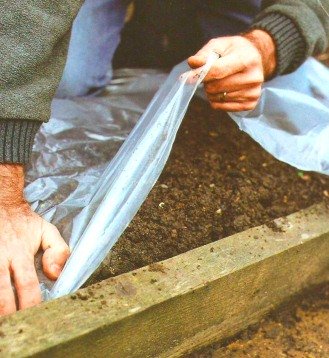|
Winter Vegetable Garden Tips and SecretsA winter vegetable garden can be easy and successful. You don’t have to leave your vegetable beds empty while looking to plan your next year’s harvest. What you can do is to warm up your soil so that you can sow your seeds earlier. …Let’s begin with the first winter gardening tip… Warming Up Your Soil for your Winter Vegetable Garden Warming up your soil can give you an excellent head start in your winter gardening venture. After all, you’ll be able to organize your vegetable beds on frosty spring days while everyone else is waiting for their soil to defrost. You see it’s dangerous to work the soil while it’s frozen as the structure can be damaged. Here’s how to warm up the soil the easy way… First, tuck the soil up for the winter. Before you proceed with this, you’ll need to fork over the soil, rake it and level it. Then you can cover it with a large sheet of polythene or a piece of old carpet. Pieces of old carpet are an excellent alternative as they are quite heavy and will not require a lot of effort to press down. Tightly tuck down the edges of the sheeting to the sides of the beds and bury them; or… you can hold them down by using a lot of bricks. Providing covering to cold bare soil will keep the soil well fit for spring and prevent the appearance of weeds over the winter and early spring. Early Winter Gardening Tips for Your Winter Vegetable GardenPlanting Trees and Shrubs
Winter Vegetable Gardening Tips for The Midwinter Period
Edible Garden Winter Tips for The Late Winter Period
Here are Some General Tips for Vegetable Gardening in WinterSieve and combine your home-made potting compost. Top up your indoor beds with some compost to help deliver nutrients for good vegetable growth. This can also help you get some top quality vegetables. You can also make some regular checks on stakes and labels if you have some woody plants. Firm the roots of your autumn plantings following the final frosts and clear out all insect traps and nests.
|









